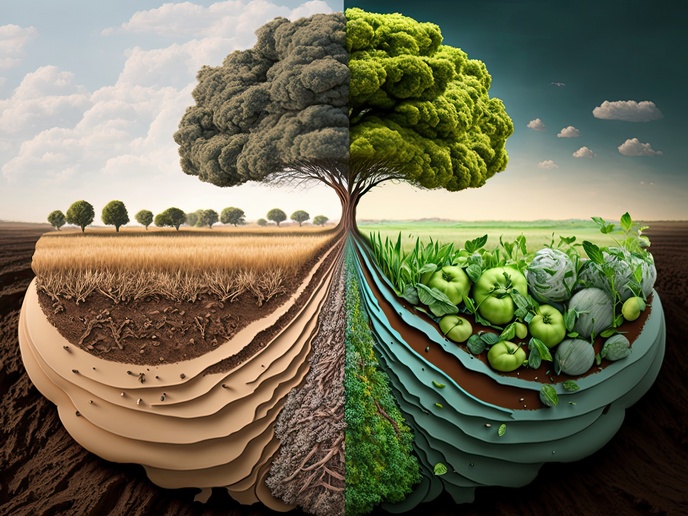The world-leading biorefinery that treats and repurposes waste water
Microscopic algae called ‘microalgae’(opens in new window) can recover the nutrients contained in waste water, transforming this into valuable agricultural products such as biostimulants and biopesticides, alongside feed additives for aquaculture. The processes involved use less energy and produce less greenhouse gas than conventional systems. But to encourage investment and take-up of this green technology means being able to do so at scale. The EU-supported SABANA project has demonstrated the technology at close to industrial scale in three facilities. The first, built by Biorizon Biotech(opens in new window), produced clean biomass for high-value applications. The others, built by FCC Aqualia(opens in new window), treat waste water using microalgae, producing biomass for low-value applications. The project was also instrumental in creating the first fully microalgae-driven waste water treatment plant in Europe, in Hellin, Spain. “We hope that this first demonstration of the technology in Europe, possibly the world, will inspire commercial development, especially for small and medium cities,” says Gabriel Acien Fernandez, project coordinator from the University of Almeria(opens in new window). SABANA has so far sparked a number of innovations currently being exploited by project partners including: biomass harvesting and processing technologies by GEA Westfalia(opens in new window) and microalgae biomass processing for feed additives by AIA(opens in new window). Current patents include: Biorizon Biotech’s microalgae-derived biostimulants and biopesticides and the University of Almeria’s SCADA systems for microalgae facilities.
Demonstrating potential
In previous projects, such as ALGAFUEL and ALL-GAS(opens in new window), the SABANA team had developed methods to produce the microalgae biomass coupled to treatment of effluents such as flue gases, sewage and animal manure, sparking commercial interest. To capitalise on this, in collaboration with the scientific agency of the Andalusian Regional Government(opens in new window) (IFAPA), SABANA built a demonstration centre at the University of Almeria. This created three hectares of indoor and outdoor facilities to experiment with microalgae production. Around 100 different microalgae strains were evaluated for their suitability to produce the required agricultural end products. The 10 most promising were then grown in large reactors under different operational conditions, with the team also trying various harvesting and processing methods. “These tests allowed us to optimise the strains and our technologies while giving us the data needed for models to simulate scaled-up production,” explains Fernandez. Farmers helped assess SABANA’s biostimulants and biopesticides in seven greenhouse-based field trials. These products indicated a boost to food production of up to 20 %, as well as a reduction in fertiliser use by up to 20 %, alongside reduced use of chemical pesticides. The products were also attractive to farmers as they improved food quality, including size, colour and taste. The feed additives were also evaluated in aquaculture, using aquafeed containing 4 % microalgae extract, to feed fish, which also yielded promising results. Microalgae biomass increases the sustainability of aquaculture by reducing the use of antibiotics in feed additives, while also benefiting fish health thanks to microalgae’s probiotic effects which increase resilience to adverse conditions.
Cultivating growth
“Aside from these specific results, the centre’s training and communication activities have also generated interest from companies and research centres interested in collaboration, as well as from young researchers, students and even the general public,” adds Fernandez. SABANA’s facilities are now being further developed as part of PILOTS4U(opens in new window). “Companies are already embracing the change from chemical products to bio ones. While a similar shift is expected in aquaculture, regulation means it will take longer,” concludes Fernandez. As well as working to expand their portfolio of microalgae-derived products, the team will next trial their approach with other applications, such as bioplastics production.







